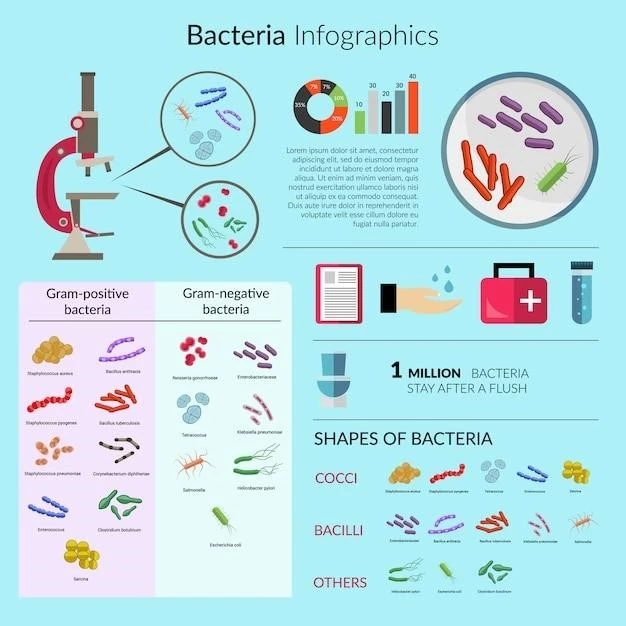Introduction to Gaucher Disease Type 1
Disease⁚ Gaucher disease type 1
Explore the definition and background of this inherited lipid storage disorder, a rare genetic condition affecting lysosomal function.
Definition and Overview
Gaucher disease type 1 is a rare genetic disorder characterized by an enzyme deficiency leading to the accumulation of lipids in various organs٫ including the spleen٫ liver٫ and bone marrow. This condition impacts lysosomal function٫ causing a range of symptoms such as anemia٫ fatigue٫ and bone abnormalities. Gaucher disease type 1 is typically diagnosed through genetic testing and enzyme activity assays. Management of the disease involves enzyme replacement therapy (ERT) to alleviate symptoms and prevent complications associated with organ damage. Understanding the complexities of Gaucher disease type 1 is crucial for effective treatment and care.
Background on Gaucher Disease Type 1
Gaucher disease type 1, a form of lipid storage disorder, is caused by an inherited genetic mutation affecting the glucocerebrosidase enzyme. This deficiency results in the accumulation of glucocerebroside in cells throughout the body, particularly in the spleen, liver, and bone marrow. Symptoms may vary widely among individuals and can include an enlarged spleen, liver abnormalities, bone pain, and easy bruising. Understanding the genetic basis of this rare disease is essential for early diagnosis and appropriate management strategies.
Understanding Gaucher Disease Type 1
Delve into the causes, inheritance, and genetic factors of this lysosomal storage disorder.
Causes and Inheritance
Gaucher disease type 1 is primarily caused by mutations in the GBA gene, leading to glucocerebrosidase enzyme deficiency. This autosomal recessive trait results in the impaired breakdown of glucocerebroside, leading to lipid accumulation. Individuals inherit one copy of the mutated gene from each parent to manifest the disorder. Understanding the genetic basis and inheritance pattern of Gaucher disease type 1 is crucial for genetic counseling and further research in treatment and management approaches.
Enzyme Deficiency and Lipid Storage Disorder
Gaucher disease type 1 is characterized by a deficiency in the enzyme glucocerebrosidase, essential for breaking down glucocerebroside. This leads to the build-up of lipids in cells, impacting various organs. The lipid storage disorder affects the spleen, liver, and bone marrow, causing a range of symptoms from anemia to bone abnormalities. Understanding the role of enzyme deficiency in this rare genetic condition is essential for effective diagnosis and management strategies.
Genetic Factors and Lysosomal Function
Genetic factors play a crucial role in Gaucher disease type 1, with mutations in the GBA gene affecting lysosomal function. Lysosomes are cellular organelles responsible for breaking down various substances. In individuals with Gaucher disease type 1, impaired lysosomal function due to enzyme deficiency leads to the accumulation of lipids, causing organ damage. Understanding the interplay between genetic factors and lysosomal function is vital in elucidating the pathophysiology of this rare genetic disorder.
Symptoms and Diagnosis of Gaucher Disease Type 1
Learn about the common symptoms and diagnostic procedures for Gaucher disease type 1.
Common Symptoms
Common symptoms of Gaucher disease type 1 include fatigue, anemia, easy bruising, and bone pain. Individuals may also experience hepatosplenomegaly, thrombocytopenia, and skeletal abnormalities. These symptoms vary in severity and presentation among affected individuals. Recognizing these common manifestations is crucial for early diagnosis and intervention to improve clinical outcomes and quality of life.
Diagnostic Procedures
Diagnostic procedures for Gaucher disease type 1 include genetic testing to identify mutations in the GBA gene. Enzyme activity assays can measure glucocerebrosidase levels, aiding in confirming the diagnosis. Imaging studies such as MRI and bone scans help assess organ involvement and bone abnormalities. Bone marrow biopsy may also be performed to evaluate lipid accumulation. A comprehensive diagnostic approach is essential to accurately identify Gaucher disease type 1 and initiate appropriate management strategies.

Treatment and Management of Gaucher Disease Type 1
Explore the enzyme replacement therapy and other treatment options for Gaucher disease type 1.
Enzyme Replacement Therapy (ERT)
Enzyme replacement therapy (ERT) is a pivotal treatment for Gaucher disease type 1٫ involving intravenous infusions of the deficient enzyme glucocerebrosidase. ERT aims to alleviate symptoms٫ reduce lipid accumulation in organs٫ and improve overall quality of life. Regular administration of recombinant enzymes can effectively manage the disorder٫ although long-term therapy is often necessary. Monitoring enzyme levels and therapeutic response is crucial in optimizing ERT outcomes for individuals with Gaucher disease type 1.
Other Treatment Options
Aside from enzyme replacement therapy, individuals with Gaucher disease type 1 may benefit from supportive treatments such as pain management, blood transfusions for anemia, and orthopedic interventions for bone complications. Additionally, regular monitoring of disease progression and organ function is essential for optimizing care. Research into novel therapies, including substrate reduction and chaperone therapies, continues to expand treatment options for individuals with Gaucher disease type 1, enhancing overall management strategies.
Complications Associated with Gaucher Disease Type 1
Discover the impact of Gaucher disease type 1 on the spleen, liver, bone marrow, and potential long-term complications.
Impact on Spleen, Liver, and Bone Marrow
Gaucher disease type 1 can lead to the enlargement of the spleen and liver, which may affect organ function. Additionally, the accumulation of lipid-laden macrophages in the bone marrow can cause bone abnormalities and affect hematopoiesis. Understanding the impact of this rare genetic disorder on these vital organs is crucial for implementing appropriate treatment strategies and preventing further complications.
Long-Term Complications
Long-term complications of Gaucher disease type 1 may include irreversible organ damage, skeletal deformities, and increased risk of fractures. Chronic anemia, thrombocytopenia, and decreased bone density are common long-term issues that affect quality of life. Proper disease management and close monitoring are essential to mitigate the progression of these complications and improve the overall prognosis for individuals with Gaucher disease type 1.
Prognosis and Quality of Life
Understanding the prognosis and quality of life for individuals with Gaucher disease type 1 is essential in providing comprehensive care. While the prognosis varies depending on disease severity and complications, early diagnosis and appropriate management can significantly improve outcomes. Enzyme replacement therapy plays a crucial role in enhancing quality of life and slowing disease progression. Close monitoring, supportive care, and research advancements contribute to better prognostic outlooks and improved quality of life for individuals living with Gaucher disease type 1.
Research and Future Directions in Gaucher Disease Type 1
Ongoing research in Gaucher disease type 1 focuses on developing novel therapeutic approaches, enhancing current treatment strategies, and exploring potential genetic therapies. Future directions include investigating substrate reduction therapy, chaperone treatments, and gene therapy to address the root cause of the disorder. Advancements in understanding the pathophysiology of Gaucher disease type 1 and clinical trials pave the way for improved outcomes and better quality of life for individuals affected by this rare genetic condition.
